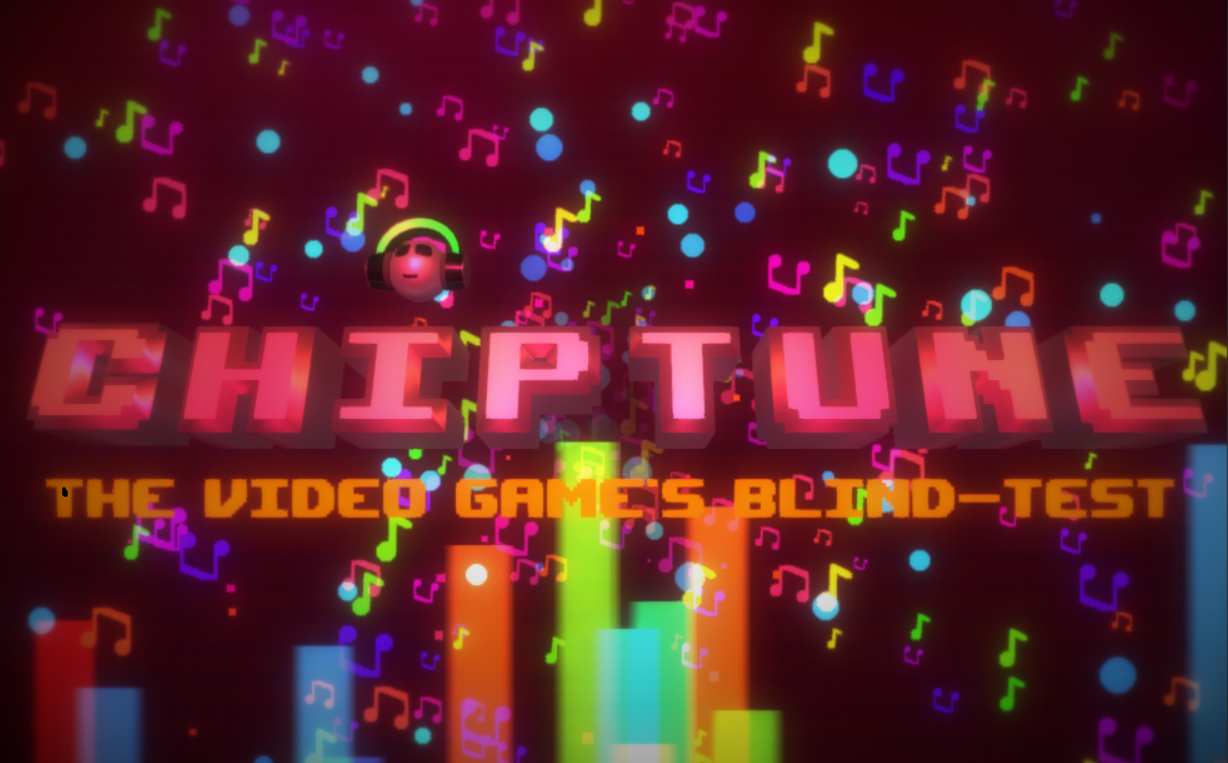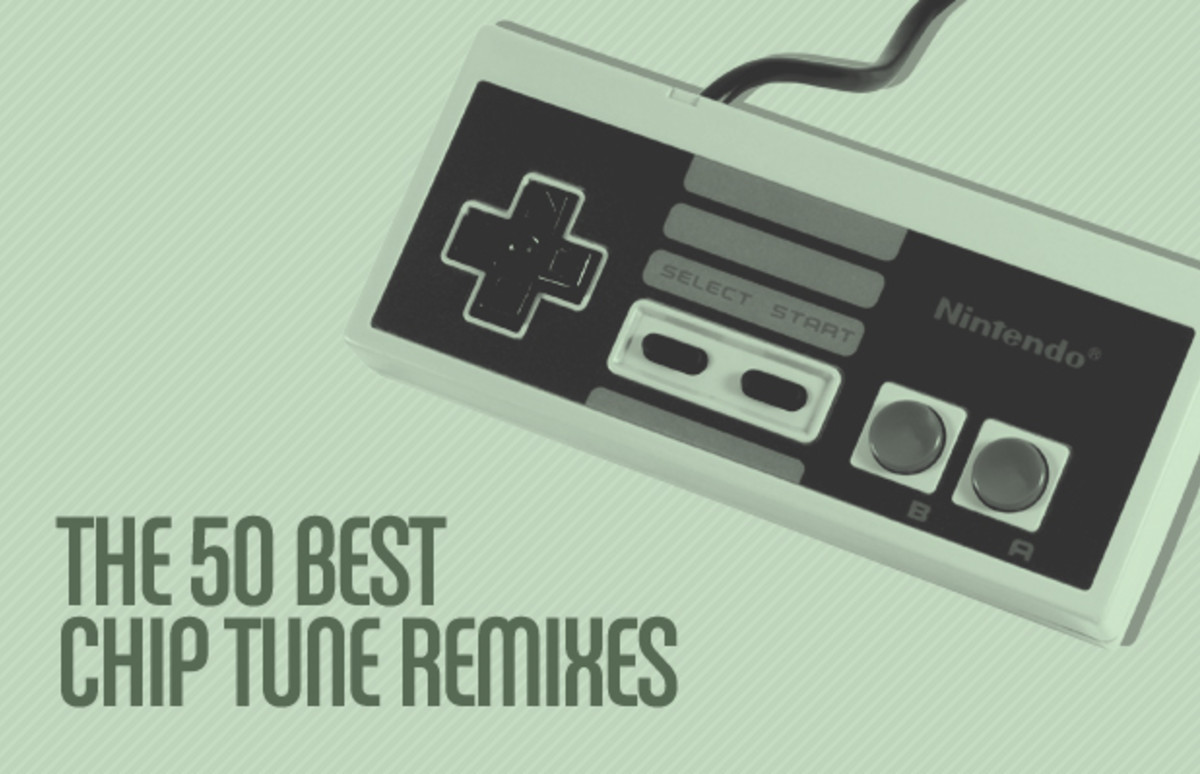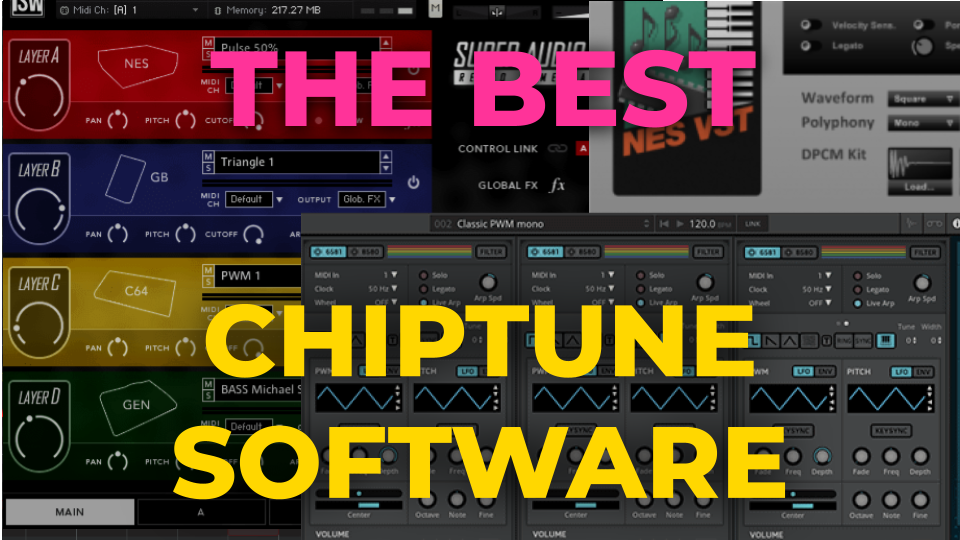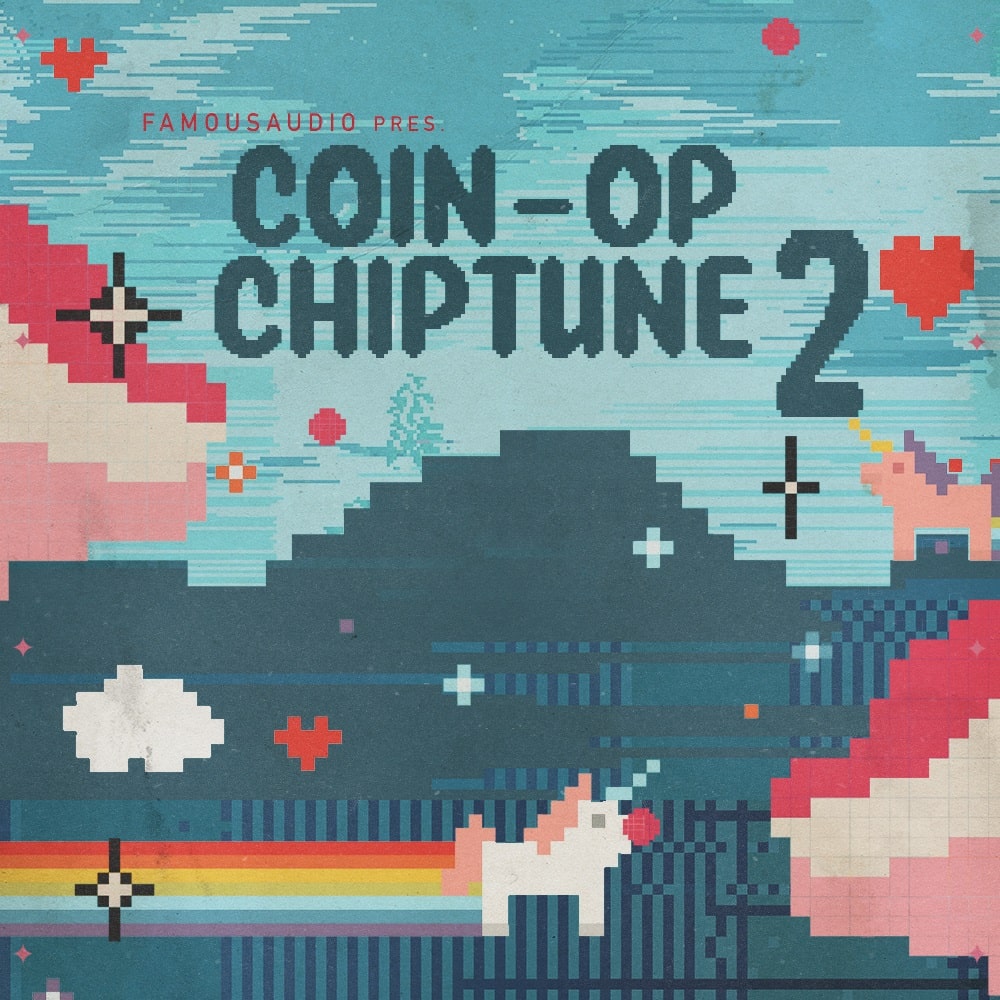Chiptune, often referred to as 8-bit or 16-bit music, holds a special place in both the history of video games and the electronic music world. Its unmistakable sound, reminiscent of classic gaming consoles and early computers, brings waves of nostalgia for gamers and music enthusiasts alike. But when exactly did chiptune music reach its peak popularity? To answer this question, it’s important to understand chiptune’s origins, its rise in the gaming world, and how it eventually resurfaced in modern indie music scenes.

Chiptune refers to music that’s made using the sound chips found in old video game consoles, personal computers, and arcade machines. These sound chips were responsible for generating the primitive, yet iconic, electronic sounds that defined video game music during the 1980s and early 1990s.
Typically, chiptune is characterized by simple, monophonic melodies, limited by the technical constraints of early gaming hardware. These soundtracks were often built on pulse wave, triangle wave, and noise channels, creating that familiar “bleepy” sound associated with games like Super Mario Bros. or The Legend of Zelda. Today, modern musicians can recreate these sounds using digital tools and software, but the aesthetic remains true to its original, retro roots.
Origins of Chiptune Music
Chiptune music originated from necessity. Back in the late 1970s and early 1980s, video game developers had very limited technological resources for music and sound effects. The audio hardware in early gaming consoles and computers was primitive by today’s standards. Consoles like the Atari 2600, Commodore 64, and Nintendo Entertainment System (NES) were only capable of producing a few tones simultaneously, and composers had to work within these constraints.
Some of the earliest chiptune music appeared in arcade games like Space Invaders (1978) and Pac-Man (1980). These games featured looping melodies and simple sound effects that became instantly recognizable. As gaming consoles entered households worldwide, so did chiptune music.
Developers like Koji Kondo (Nintendo) and Rob Hubbard (Commodore 64) became pioneers of the genre. They turned the technical limitations of these systems into a creative opportunity, composing unforgettable soundtracks that still resonate with players today.

The Early Days: Chiptune’s Rise in Popularity
1980s – The Golden Age of Chiptune in Video Games
The 1980s marked the beginning of chiptune’s dominance in the world of video game music. This era, often referred to as the “Golden Age of Arcade Games,” was when chiptune music was most commonly heard. Gaming consoles such as the Nintendo Entertainment System (NES), Sega Master System, and home computers like the Commodore 64 became popular, and they all relied on simple sound chips to produce audio.
During this time, many of the most iconic game soundtracks were created using chiptune music. Some of the key composers included:
- Koji Kondo, who composed the music for Super Mario Bros. and The Legend of Zelda on the NES. His work is often credited with defining the sound of video game music in the 1980s.
- Rob Hubbard, a legendary composer for the Commodore 64, is known for his complex and melodic tunes that pushed the hardware’s limits. His music for Monty on the Run and Commando remains influential.
- Yuzo Koshiro, famous for composing for games like Streets of Rage and ActRaiser, who also made a significant mark using early hardware to produce rhythmic and danceable tracks.
In the 1980s, chiptune music wasn’t just background sound—it was part of the gaming experience, enhancing the atmosphere and making gameplay more immersive. The limitations of early hardware forced composers to be inventive, resulting in catchy, looping melodies that stuck with players long after they put the controller down.
1990s – Transition to More Advanced Soundtracks
As technology improved during the 1990s, gaming consoles like the Super Nintendo Entertainment System (SNES) and Sega Genesis introduced more advanced sound capabilities. This allowed for richer, more complex soundtracks, and as a result, the use of pure chiptune music began to decline.
However, even though chiptune was less prominent in mainstream games, it didn’t disappear completely. Many game developers, particularly those working with lower-budget titles or handheld consoles like the Game Boy, continued to use chiptune due to its simplicity and low cost. The Game Boy’s sound chip played a major role in keeping the chiptune sound alive, especially with games like Pokémon and Tetris.
By the mid-1990s, CD-quality audio became the norm for home consoles, and chiptune was largely replaced by fully orchestrated soundtracks and high-fidelity digital music. Games like Final Fantasy and The Legend of Zelda: Ocarina of Time set new standards for game music, and chiptune fell out of the mainstream. However, the genre began to find a new audience through underground music communities and retro game enthusiasts who embraced the aesthetic of early gaming sounds.

When Was Chiptune Most Popular?
2000s – Chiptune Revival
After its decline in the mainstream gaming industry, chiptune saw a remarkable revival in the early 2000s. This resurgence wasn’t driven by large game studios, but rather by independent artists and DIY (Do It Yourself) music creators. The chiptune revival can be attributed to several key factors:
- Nostalgia for Retro Gaming: As the gaming industry moved toward more realistic graphics and complex audio, many players and musicians began to feel nostalgic for the simplicity of early games. The recognizable 8-bit sound brought back memories of playing classic titles like Super Mario Bros. and The Legend of Zelda.
- Indie Game Developers: The indie gaming movement exploded in the 2000s, with small developers creating games that emphasized creativity over technological complexity. Chiptune was a natural fit for these games, as its retro sound aligned perfectly with the pixelated graphics and nostalgic vibe of many indie titles. Games like Cave Story (2004) and Fez (2012) used chiptune soundtracks to enhance their retro aesthetics, contributing to the genre’s resurgence.
- Affordable Technology: Advances in software allowed aspiring musicians to create chiptune music without the need for vintage gaming hardware. Programs like LSDJ (Little Sound DJ), Famitracker, and MilkyTracker allowed users to compose music on modern computers that mimicked the sounds of older sound chips. This democratized chiptune music creation, enabling anyone with a computer to experiment with 8-bit and 16-bit sounds.
- Online Communities and Platforms: The rise of internet forums and platforms like Bandcamp and SoundCloud provided a space for chiptune musicians to share their work and connect with others. Communities like 8bitcollective and ChipMusic.org became popular hubs for chiptune enthusiasts, fostering a sense of community among creators and listeners.
This revival of chiptune in the 2000s marked the genre’s transition from a relic of gaming history to a legitimate form of electronic music. During this period, chiptune music began to appear not only in games but also in standalone albums, live performances, and even festivals dedicated to the genre. One band that stood out during this time was Anamanaguchi, an electronic rock band that fused chiptune sounds with live instruments. Their soundtracks, including the one for Scott Pilgrim vs. The World: The Game (2010), were emblematic of chiptune’s rise in popularity during this decade.
2010s – The Peak of Chiptune Culture
Chiptune reached its peak popularity in the mid-2010s, during which time it was not only widely accepted in indie gaming but also began to influence mainstream music genres like EDM (Electronic Dance Music), synthwave, and pop. Several key events and trends during the 2010s cemented this era as the height of chiptune’s popularity:
- Chiptune Festivals and Live Performances: Festivals like Blip Festival (held annually in New York City) celebrated chiptune culture, bringing together artists and fans from around the world. These events included live performances where musicians used modified Game Boys and vintage computers to create music on stage, showcasing the artistry and creativity behind the genre.
- Integration into Pop Culture: Chiptune began to move beyond indie games and into broader media. The retro sounds of 8-bit music appeared in commercials, movies, and even mainstream albums. Artists like Anamanaguchi and Chipzel gained international recognition, performing at major venues and festivals. Anamanaguchi’s album Endless Fantasy (2013) reached the Billboard charts, marking a significant moment for the genre.
- Chiptune in Popular Games: Some of the most iconic indie games of the 2010s featured chiptune soundtracks. Shovel Knight (2014), composed by Jake Kaufman and Manami Matsumae, is a notable example. The game’s chiptune music perfectly matched its retro, 8-bit-inspired visuals, and was highly praised by critics and fans alike.
- The Rise of Streaming and Digital Platforms: With platforms like Spotify, Bandcamp, and YouTube, chiptune artists could reach global audiences. The genre benefited from the growing popularity of streaming music, allowing listeners to discover new chiptune artists with ease. This increased exposure helped solidify chiptune’s place within the broader electronic music landscape.
During this period, chiptune wasn’t just a niche genre for gaming enthusiasts—it was embraced by electronic music lovers, retro gaming communities, and even casual listeners who appreciated its unique, nostalgic sound. The mid-2010s are often regarded as the peak of chiptune’s popularity, where it reached its widest audience and influence.

Why Did Chiptune Become So Popular?
Nostalgia and Retro Appeal
One of the main reasons chiptune became so popular, particularly during its revival in the 2000s and peak in the 2010s, was its strong connection to nostalgia. The sound of chiptune is intrinsically linked to the early days of gaming, a time when many of today’s adult gamers first experienced the joy of video games. The simple, electronic melodies evoke memories of playing games like Super Mario Bros., The Legend of Zelda, and Tetris on systems like the NES, Game Boy, and Commodore 64.
Nostalgia is a powerful force in shaping popular culture, and as the generation that grew up playing these games reached adulthood, they sought out ways to reconnect with their childhood. Chiptune, with its 8-bit and 16-bit sounds, provided that direct connection to the past, making it a natural fit for retro gaming enthusiasts and fans of vintage electronics. This longing for the “good old days” was further amplified by the rise of retro consoles, like the NES Classic and SNES Classic, which allowed new generations to experience classic games with their original soundtracks.
Nostalgia also influenced non-gaming fans, as many listeners were drawn to the “retro-futuristic” sound of chiptune. The music’s unique aesthetic, which combines a sense of old technology with futuristic tones, resonated with electronic music fans. As a result, chiptune became a distinctive and recognizable genre, even for those without direct ties to gaming.
The Influence of the Indie Game Scene
Another key factor in chiptune’s popularity was its deep association with the indie game development scene. During the 2000s, indie games became a driving force in the gaming industry, emphasizing creativity and storytelling over big budgets and cutting-edge graphics. Many indie developers embraced a retro style for their games, using pixel art and minimalist design to harken back to the early days of gaming.
For these developers, chiptune was a perfect match for their aesthetic. The genre’s lo-fi, electronic sound fit seamlessly with the retro visuals of games like Fez and Hotline Miami. Additionally, the simplicity and cost-effectiveness of chiptune music made it an ideal choice for small development teams with limited resources.
Some of the most iconic indie games that utilized chiptune soundtracks include:
- Fez (2012): Composer Disasterpeace crafted an atmospheric and nostalgic chiptune soundtrack that perfectly matched the game’s retro-inspired visuals and puzzling gameplay.
- Hotline Miami (2012): While not exclusively chiptune, the game’s soundtrack incorporated retro synths and 8-bit sounds to create a high-energy, electronic vibe that became a defining feature of the game.
- Shovel Knight (2014): The entire aesthetic of Shovel Knight was designed to mimic the NES era, and the chiptune soundtrack by Jake Kaufman and Manami Matsumae helped immerse players in this retro world.
These indie games showcased how chiptune could still be relevant in modern gaming, and in many cases, these soundtracks became as beloved as the games themselves. The combination of retro visuals and nostalgic audio created a perfect storm, making chiptune a popular choice for both developers and players in the indie scene.
DIY Culture and Accessibility
One of the most appealing aspects of chiptune is its DIY (Do It Yourself) ethos. Unlike other music genres that require expensive equipment or formal training, chiptune music can be created by almost anyone with a computer or an old gaming console. The genre’s origins in hacking and repurposing old technology laid the foundation for a creative community built around experimentation and accessibility.
As modern technology advanced, chiptune became even more accessible. Open-source software like Famitracker, MilkyTracker, and LSDJ (a popular Game Boy music tracker) allowed musicians to create authentic 8-bit music on modern computers. This software enabled users to emulate the sound chips of old gaming consoles and compose music with the same limitations that early game composers faced.
In the 2000s and 2010s, online communities flourished, allowing chiptune enthusiasts to share their creations, tips, and techniques. Forums, Reddit groups, and specialized websites like ChipMusic.org and 8bitcollective became hubs for musicians to collaborate, learn, and distribute their work. This sense of community helped sustain chiptune’s popularity and fostered a new generation of artists who embraced the genre’s DIY spirit.
The fact that chiptune was so accessible also contributed to its wide appeal. Unlike mainstream genres that often required expensive production tools, chiptune could be created on a shoestring budget, allowing anyone with a passion for the sound to contribute. As a result, the chiptune scene grew rapidly, with thousands of artists creating and sharing music online.